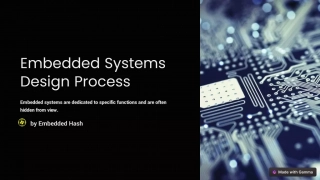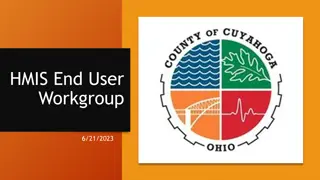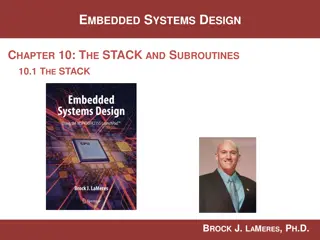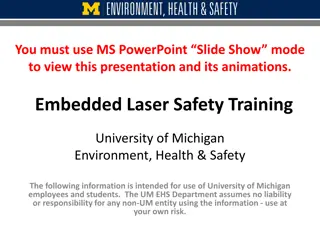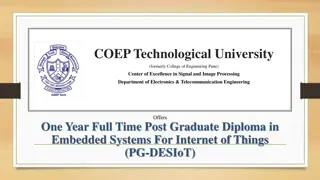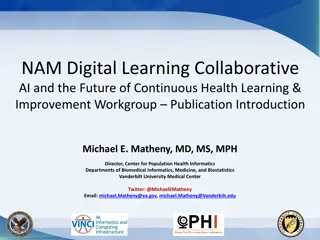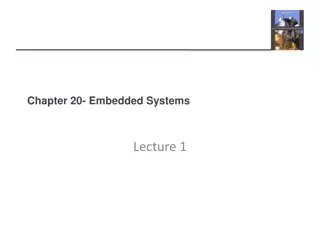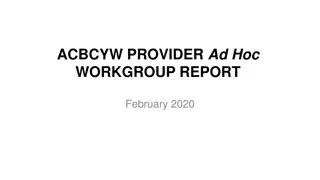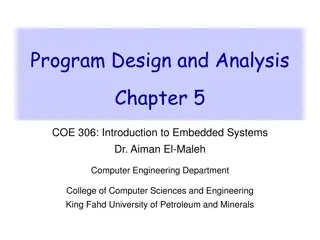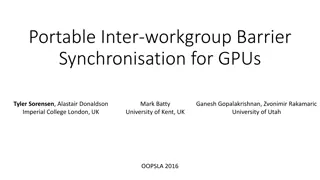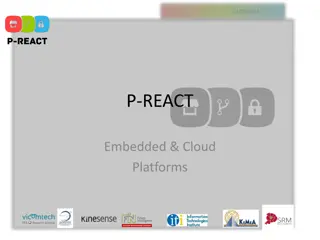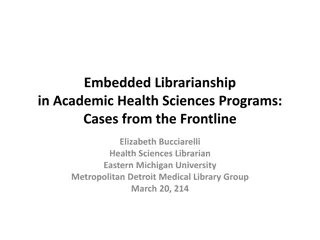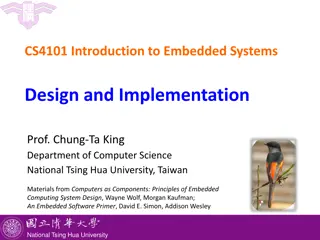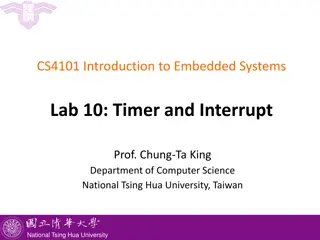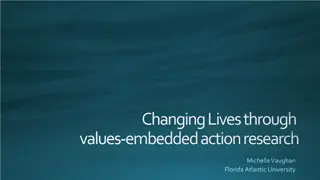Embedded Research Conference Workgroup B: Management Decisions Support
Workgroup B at the Embedded Research Conference focuses on providing research support for management decisions. The participants aim to identify and prioritize operational questions that could benefit from embedded research, work productively within the existing QI ecosystem, and create an inventory of methods for an embedded research toolkit. The vision includes efficient processes, authentic engagement, seamless integration between research and operations, and methodological pluralism. The current state involves prioritization and alignment challenges, where top-down vs. bottom-up processes, investigator-initiated vs. organizational priorities, and question formulation alignment are key factors. Feasibility, rigor, commitment levels, and trade-offs between resources and rigor are important considerations.
Download Presentation

Please find below an Image/Link to download the presentation.
The content on the website is provided AS IS for your information and personal use only. It may not be sold, licensed, or shared on other websites without obtaining consent from the author. Download presentation by click this link. If you encounter any issues during the download, it is possible that the publisher has removed the file from their server.
E N D
Presentation Transcript
Embedded Research Conference Workgroup B: Research Support for Management Decisions February 21, 2019
Workgroup B Participants John Adams Monica Perez-Jolles Terry Adirim Eve Kerr Heather Black Stephen Kimmel Deborah Cohen Heather Kitzman David Glass Tracy Lieu Michael Gould Brian Mittman Reshma Gupta Huong Nguyen Julie Hawley Thearis Osuji Jodi Holtrop Carly Parry Moira Inkelas Lisa Rubinstein Leif Solberg
Workgroup B Aims Describe and prescribe approaches to: Identify and prioritize operational questions that could potentially benefit from embedded research support Identify opportunities for embedded research to work productively within the existing QI ecosystem Help partners formulate the operational research question and make sure that there is alignment between study design and available resources Create an inventory of existing and needed methods that would comprise an embedded research tool kit
Workgroup B Vision Efficient processes and bi-directional communication to identify and prioritize operational questions Authentic engagement between members of the research team, operational partners and other stakeholders Seamless integration between research, QI and operations Clear and explicit articulation of research questions Alignment between study design, available resources and importance of the information to be gained Methodological pluralism: ability to leverage diverse methods to answer the operational question
Current State: Prioritization and Alignment Identification and prioritization Process: top-down vs. bottom-up; investigator initiated vs. organizational priority Key factors: comparative advantage, alignment with strategy, presence of strong champion or existing operational workgroup What types of questions? Any! In particular: framing, prediction, outcomes, implementation fidelity Question formulation and alignment Process is often ad hoc Need to determine feasibility Tradeoffs between feasibility and rigor; available resources and rigor not always acknowledged Varying levels of commitment among researchers and clinical partners 6-month process to shape ideas and determine feasibility
Current State: Integration with QI Research: more rigorous, produces generalizable knowledge, takes long-term view, establishes causality, relies on equipoise, intent to publish Embedded research capitalizes on relationships with health system leaders and knowledge of the local setting; health system-based and focused; can be internally or externally funded Other dimensions: who has agency, IRB oversight, improvement target Relationship between embedded research and operations/QI/improvement science Separate: let QI be QI (more narrowly focused, pragmatic, rapid, applied); research is QI on steroids Integrated: one enhances the other; leads to synergies False dichotomy/artificial distinction/jingle-jangle fallacy: different traditions and tools working toward the same goals QI-Research Continuum (focused QI/system-wide QI/observational/experimental)
Current State: Methods What s in the Tool Box Observational studies: pre/post, interrupted time series, regression discontinuity, process evaluation Risk stratification and prediction Quasi-experimental studies, i.e. stepped-wedge Cluster and patient-level RCTs Pragmatic trials Qualitative and mixed methods
Barriers to Achieving Vision Identification and Prioritization Limited access to operational leaders and other stakeholders Push vs. pull? Formulation and Alignment Lack of training in research methods; limited knowledge of operations; unrealistic expectations Integration with operations and QI What is embedded research and how does it differ from QI or non-embedded research or evaluation? Existence of unique contextual factors limits research generalizability IRB and human subjects Methods Limited tolerance for experimentation/disruption makes it difficult to use more rigorous study designs Limited capacity and resources: researchers, data, FTE
Recommendations for researchers Prioritization Build authentic relationships Listen and learn Align with organizational goals Formulation and Alignment Use tools to help define the research question, available resources, potential impact, e.g. logic models, conceptual frameworks, intake forms, PICOTS questions Bring perspective of outsider looking in: appreciate the mundane Invest in pre-work Engage stakeholders up front; include research staff (e.g. programmers) in meetings Be nimble and ready to pivot: adjust timelines, redirect when question is not a high priority
Recommendations for researchers Integration with operations and QI Find the niche Develop taxonomy of embedded research to show how to integrate ER into the existing continuum of QI and research activities Clarify distinctions: embedded research, improvement science, QI, LHS Is there a better terminology? Methods Leverage existing tools for causal inference: interrupted time series, regression discontinuity Seek additional training opportunities: consultancy, methods Don t let the great be the enemy of the good Bring in new methods and approaches
Expanded Scope of Activity and Corresponding Methods: What s in the Enhanced Tool Kit? Benchmarking health system performance Patient-centered and other outcomes (to complement process measurement) Strategies to enhance patient engagement Simulation and other in silico modeling Risk stratification and prediction Human-centered design approaches Immersive methods: direct observation, time-motion, shadowing Ability to work with consultants N=1 trials, adaptive designs, precision-focused approaches
Recommendations for research funders Engage health system leaders to identify shared priorities Provide funding opportunities to develop novel methods for embedded research/health system science
Recommendations for health system leaders Provide access to embedded researchers to keep them informed about organizational priorities Facilitate bi-directional flow of ideas Encourage experimentation Consider skunk works or innovation labs Discourage silos between research and operations Develop shared governance structures for embedded research and QI Define roles and responsibilities explicitly
Next Steps Develop and refine taxonomies, e.g. embedded research Develop grid to clarify continuum of funding needs and sources Continues efforts to engage health system leaders Disseminate recommendations


